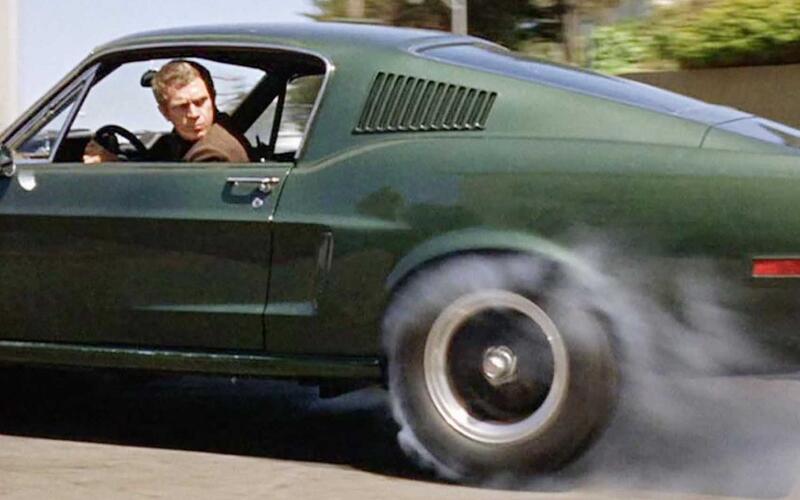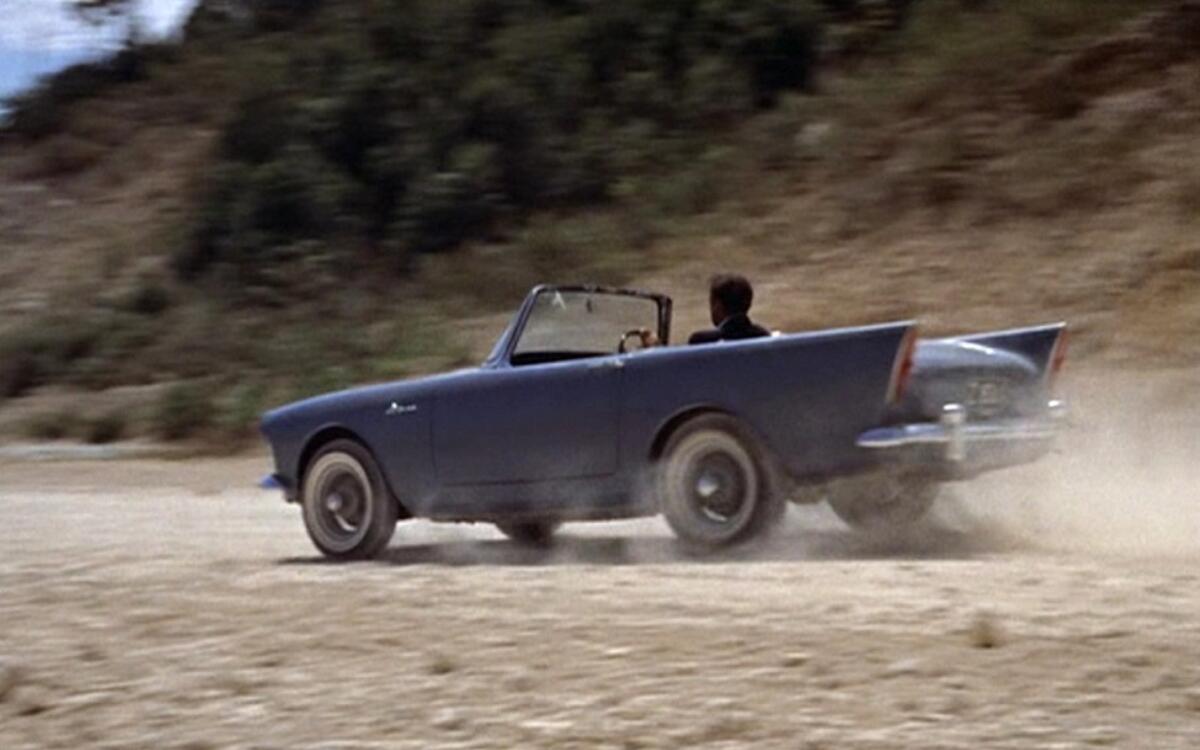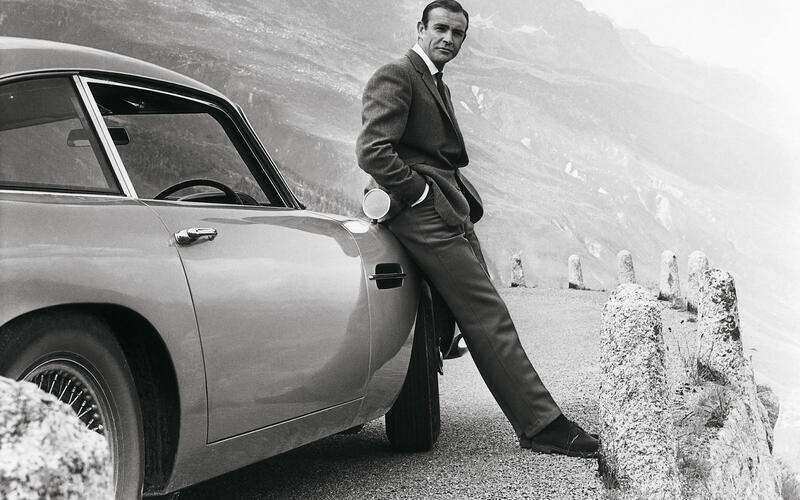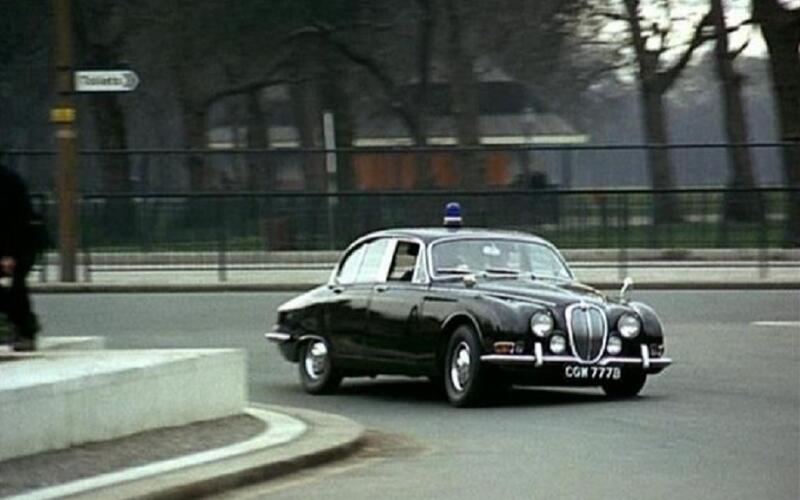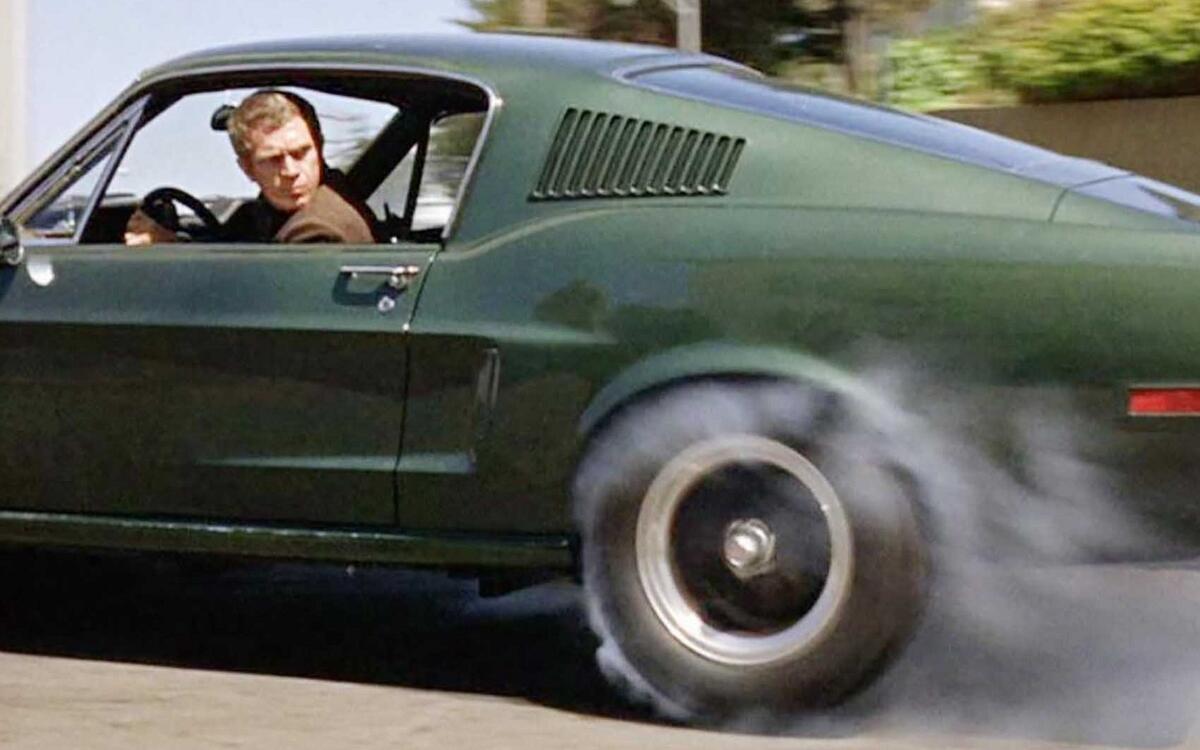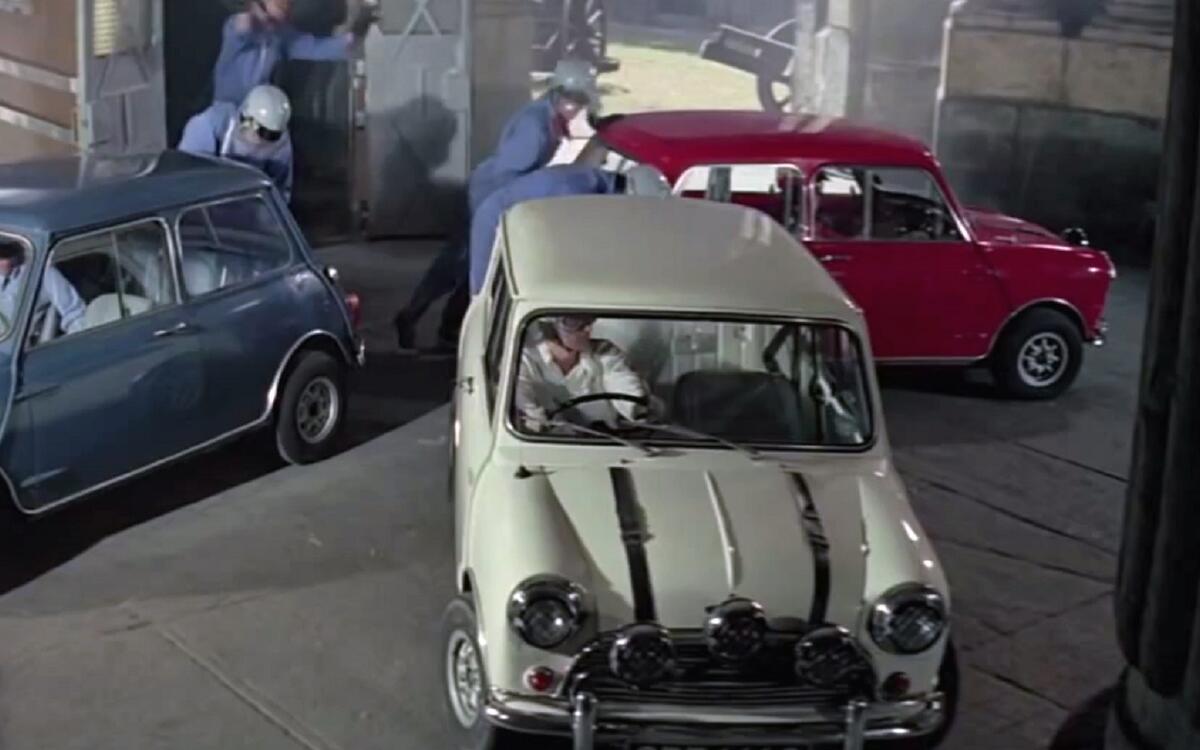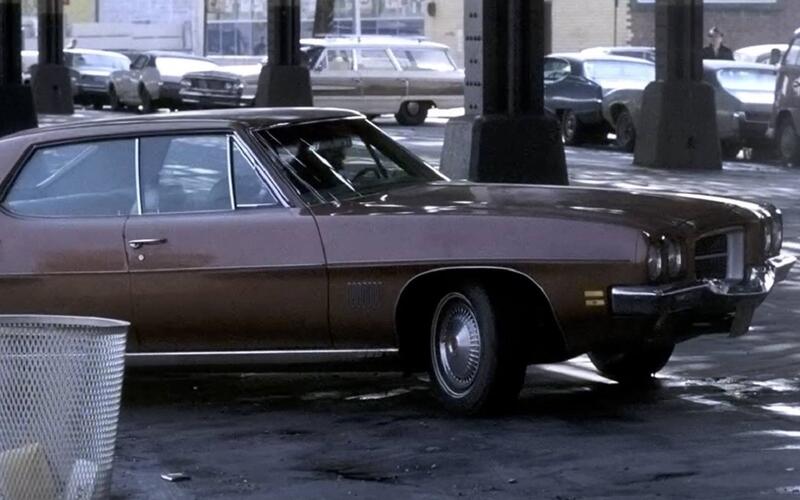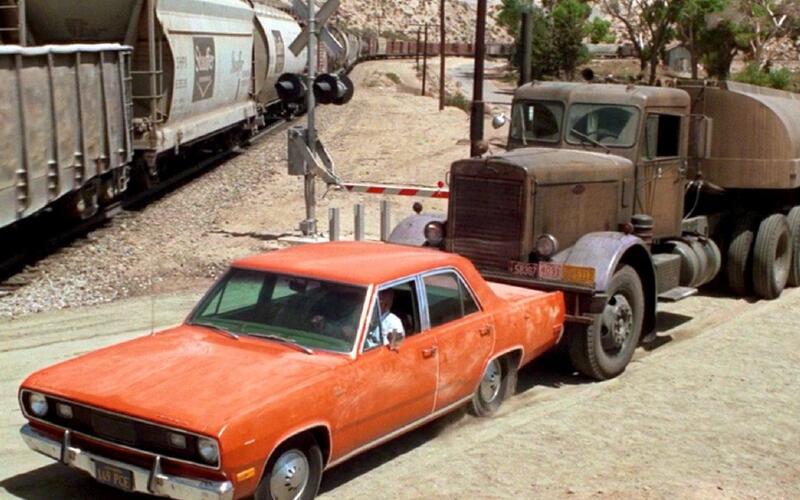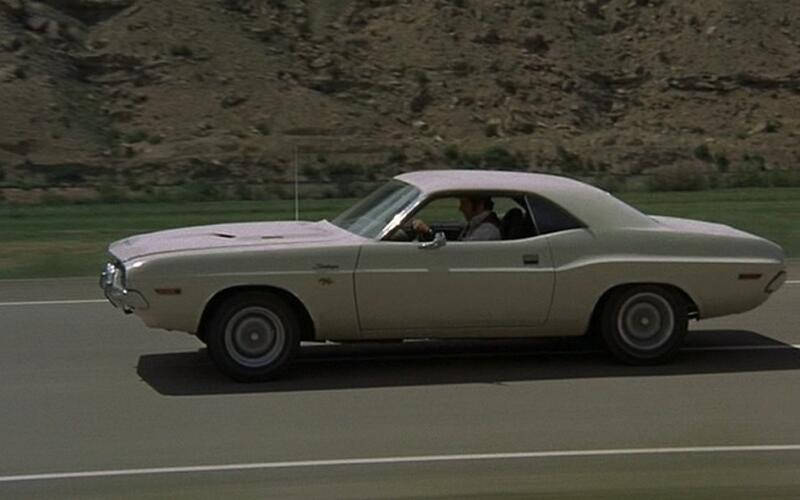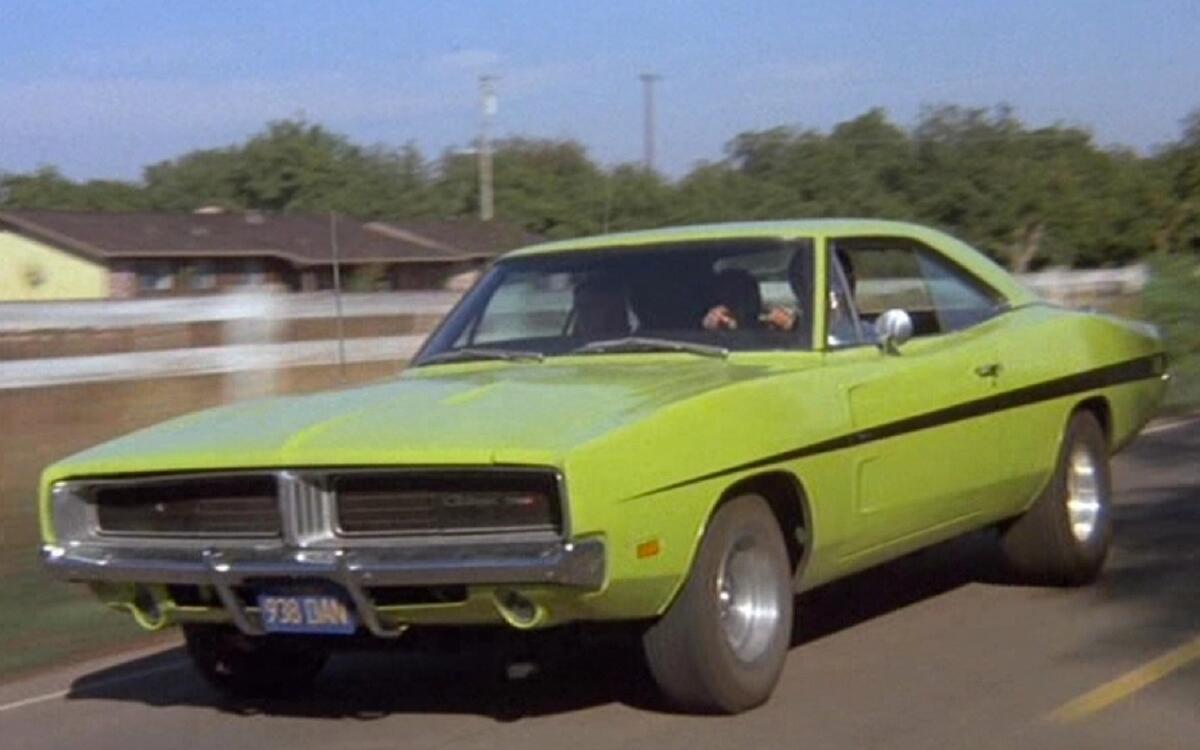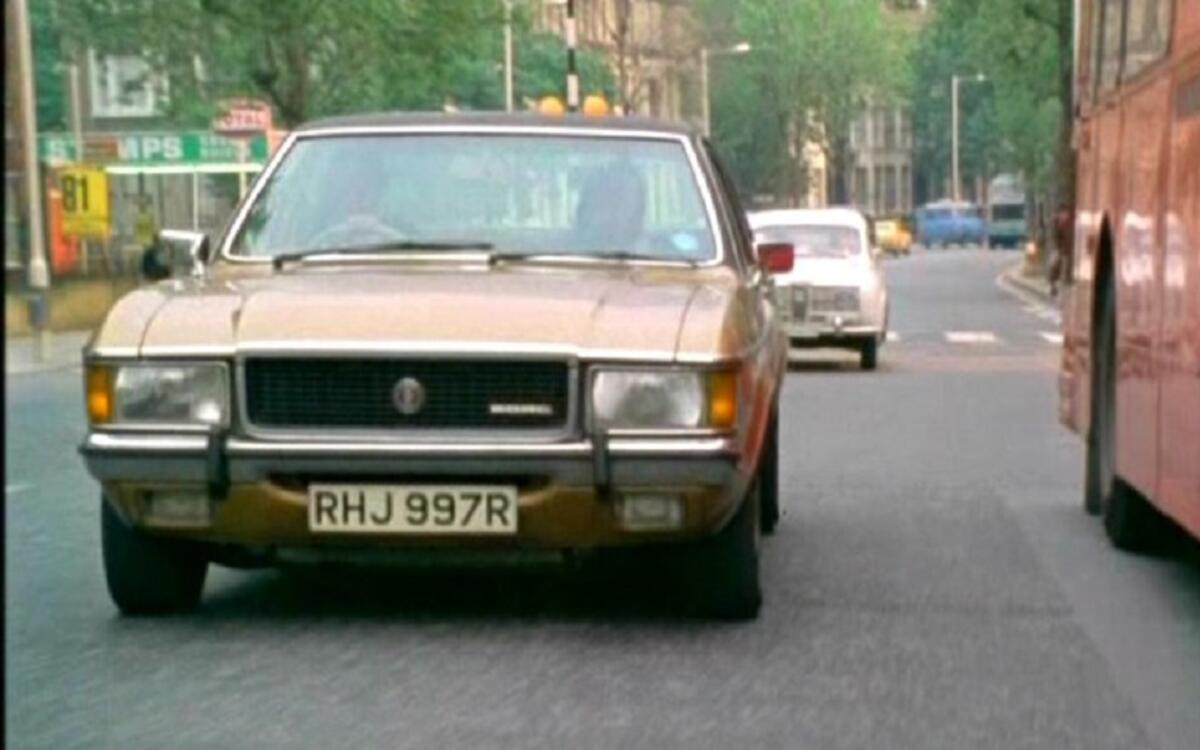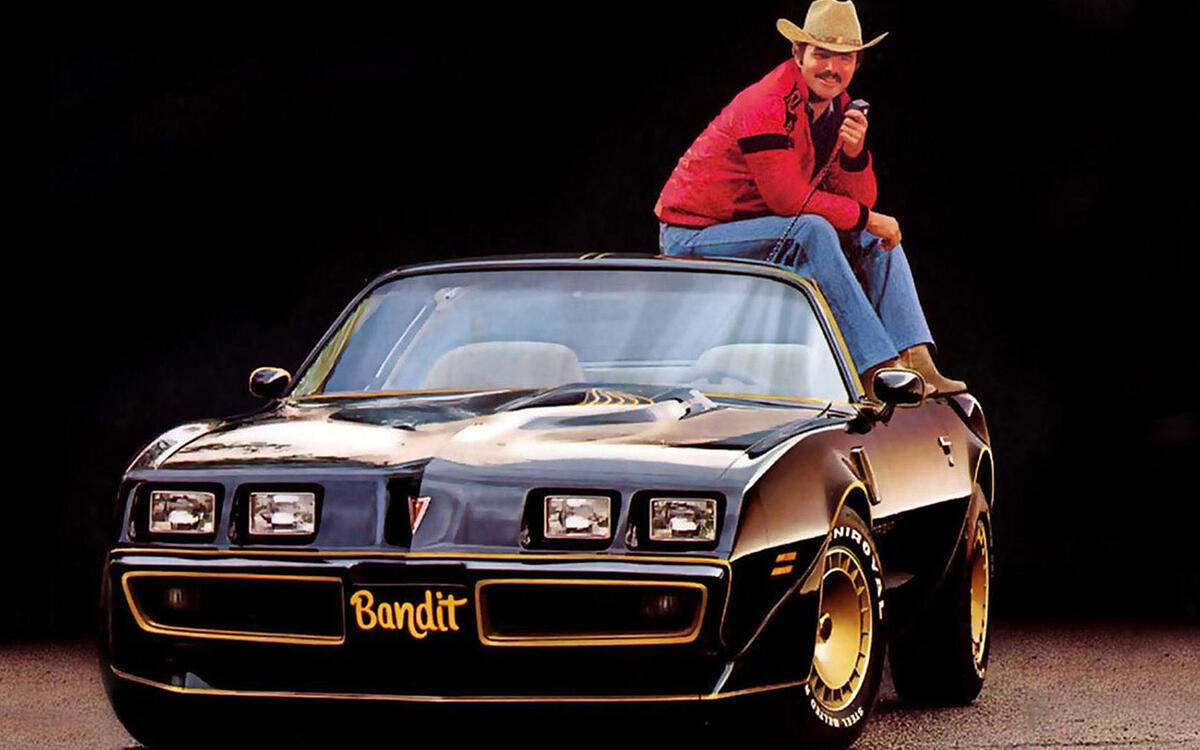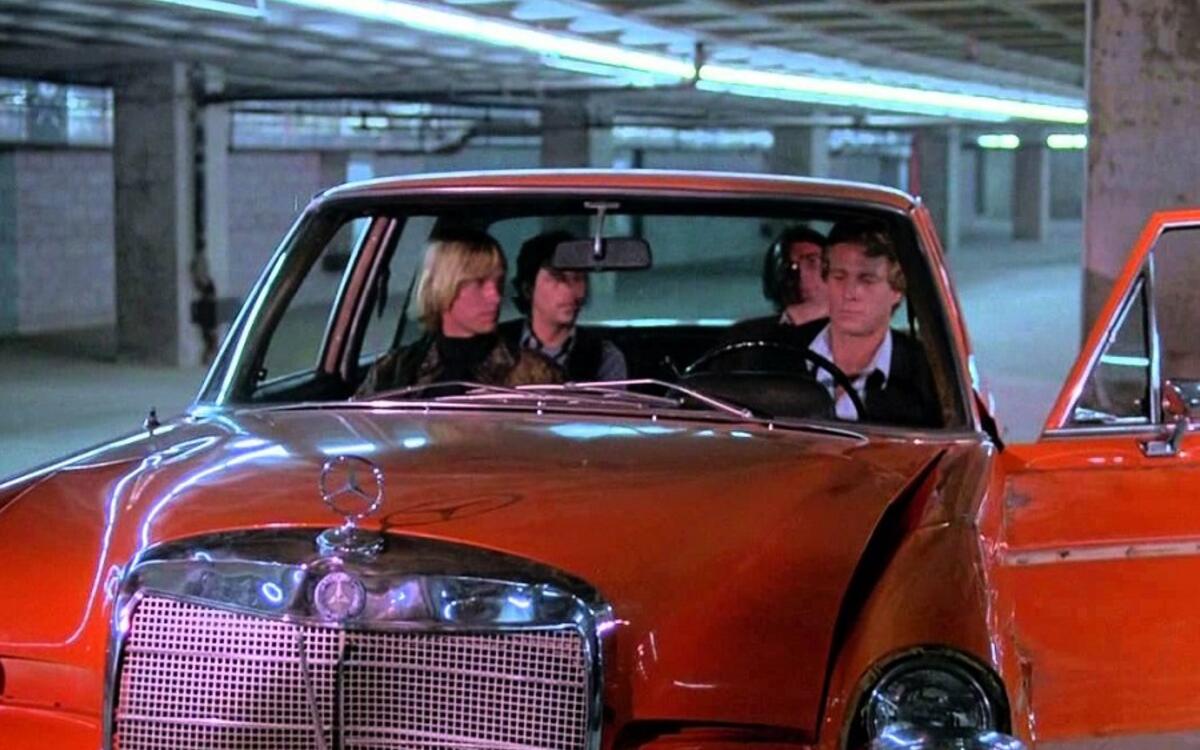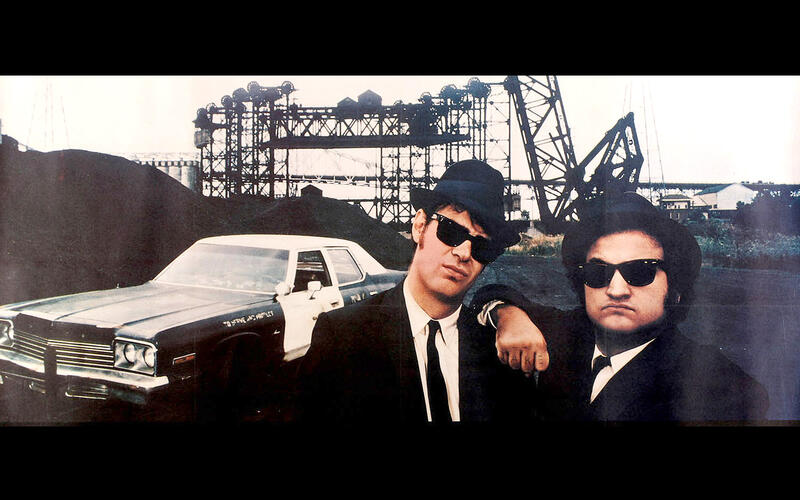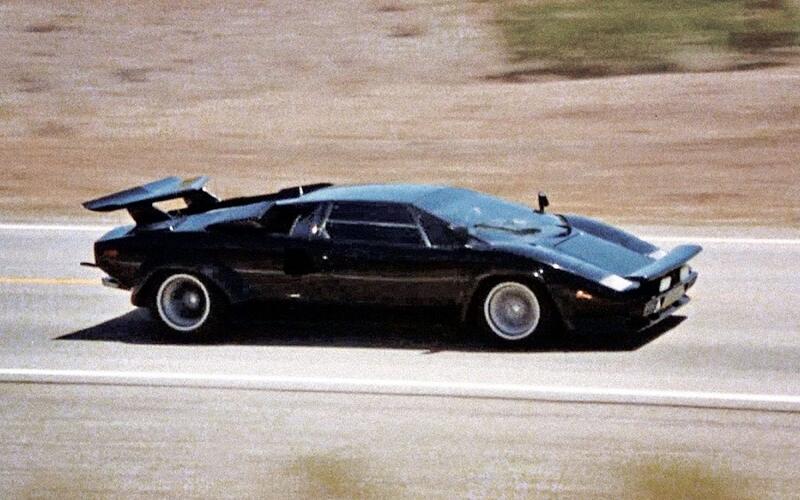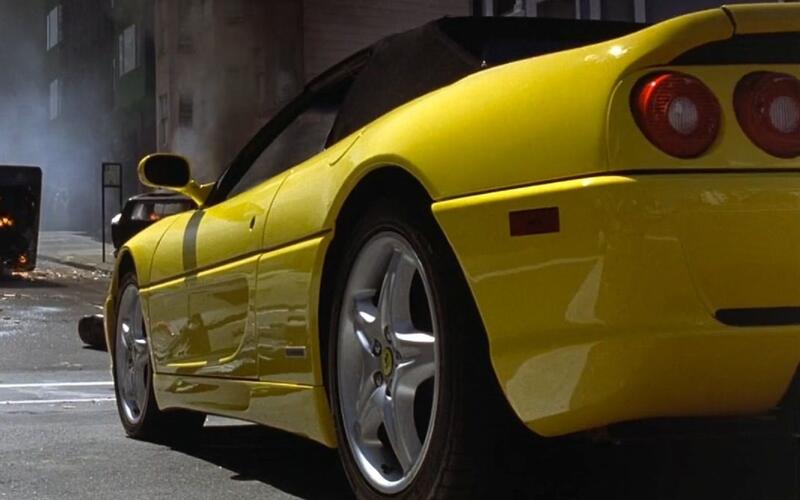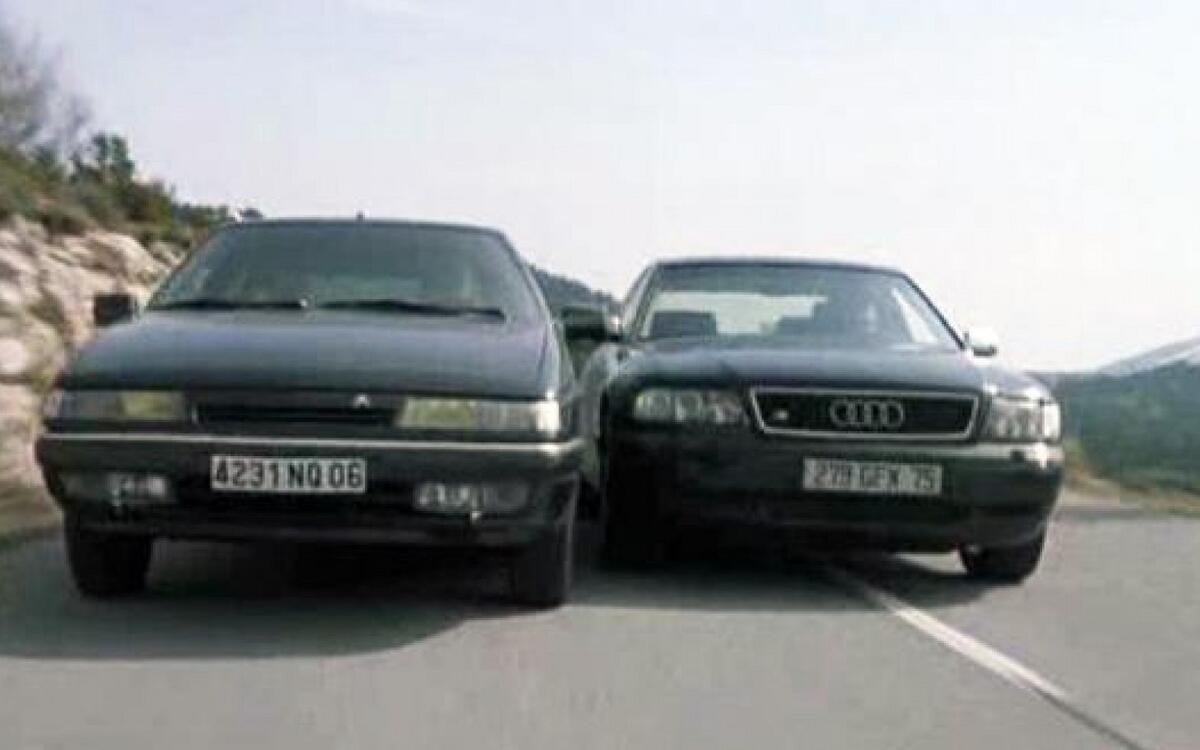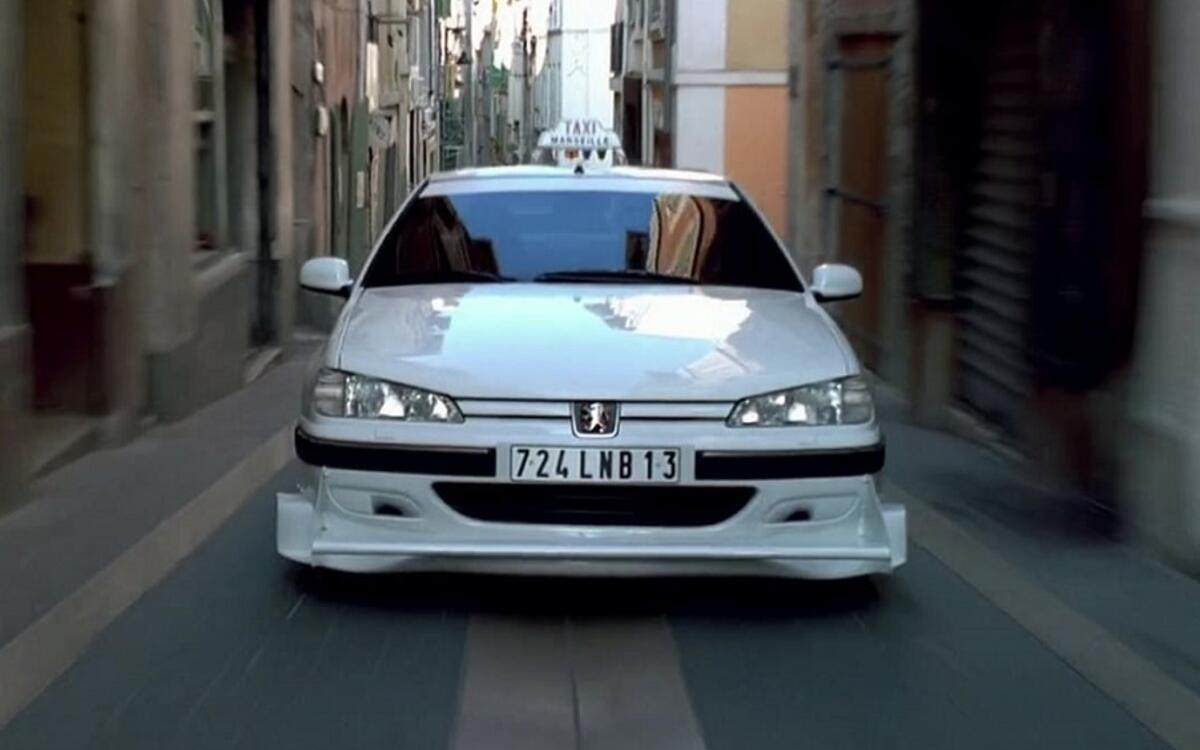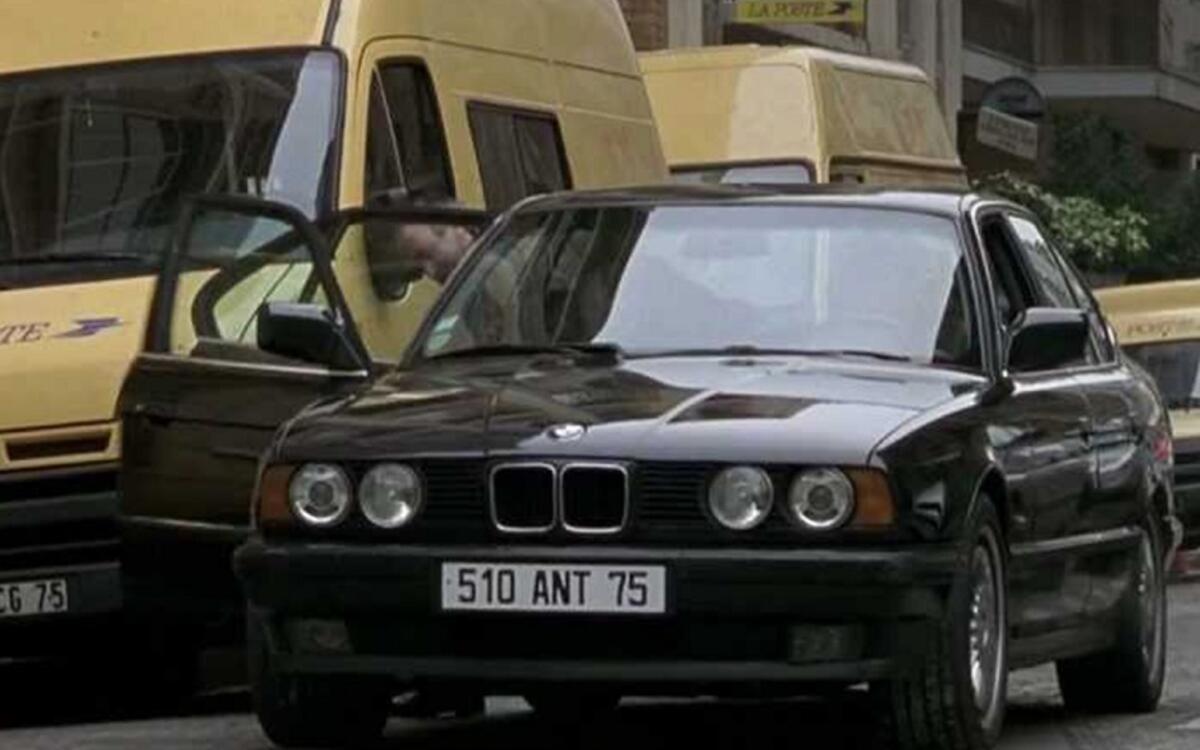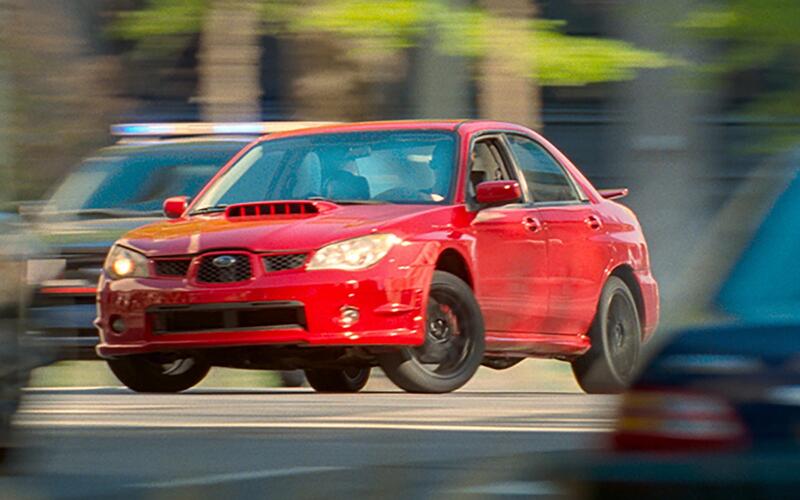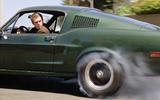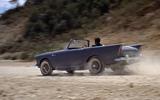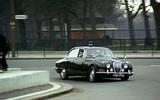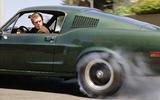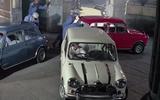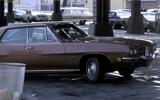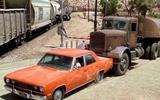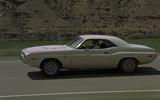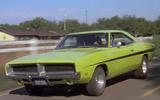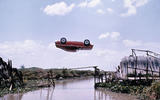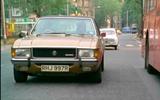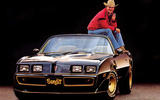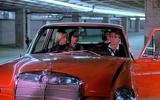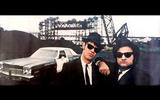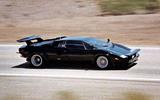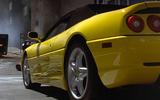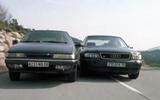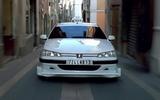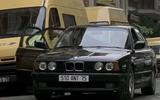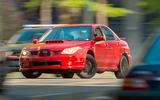 Slide of
Slide of
From television to the big screen, car chases are a staple of the movies.
And it looks like the new James Bond film No Time to Die will have a bunch of them. The only problem is that we’ll have to wait until November to see it, as its arrival has been delayed by the Coronavirus.
So in the meantime, let’s take a look at the best cars to appear in movie chase scenes. Whether it’s perfect reality or just the most memorable stunts, we’ve listed the best movie chase cars in chronological order of film release:
 Slide of
Slide of
Sunbeam Alpine (Dr No, 1962)
James Bond may be inseparable from Aston Martin cars, but his first onscreen car – used in his first on-screen car chase - was a 1961 Sunbeam Alpine Series II. Needed at short notice, the Alpine was borrowed from a local in Jamaica as it was the only sports car the film crew could find. There were no stunts or gadgets for this car as it had to be returned to its owner in one piece, so instead we get a spirited chase with Bond pursued by villains driving a 1939 LaSalle Funeral Coach.
Presumably too valuable to wreck, a visually similar 1949 Humber Super Snipe Mk2 Hearse was chucked off a cliff at the end instead. And luckily for Bond, the Alpine was a step up from the Hillman Minx saloon that original author Ian Fleming had him driving in the book that inspired the film. Nearly 20,000 Series II Alpines were made; the Alpine spawned a celebrated V8-powered variant, named Tiger.
 Slide of
Slide of
Aston Martin DB5 (Goldfinger, 1964)
The Aston Martin DB5 from Goldfinger is the quintessential Bond car. Its first chase scene is rather tame against a Ford Mustang convertible, but it’s a chance to see the DB5’s gadgets in action as Bond uses sat-nav to track the villain and then tyre shredders that extend from the wheels to disable the Ford.
The modifications to the Aston were made by special effects maestro John Stears (1934-1999), who convinced the British car maker to give him a DB5 prototype to use. To get the best value from the work, the Aston was used again in Thunderball, while another DB5 returned for Goldeneye in 1995. There have been DB5s in most Bond films since, including the upcoming No Time to Die. 1059 DB5s were produced between 1963 and 1965.
 Slide of
Slide of
Jaguar S-type (Robbery, 1967)
Before British director Peter Yates (1929-2011) made his name with Bullitt, he filmed Robbery in London. In fact, it was the opening chase in this 1967 movie that landed Yates the job in the USA when Steve McQueen saw the film. Helping Yates make such a great show of this was the Jaguar S-type used by the police to pursue the baddies in a Jaguar Mk2.
Shot in Kensington and Ladbroke Grove in west London, much of the chase was filmed early in the morning to avoid traffic. Look closely and you can spot several locations were used more than once in the final film, which is something Yates did again with Bullitt. The S-type was powered by 3.4-litre or 3.8-litre straight six engines. 24,993 examples were produced between 1963 and 1968.
 Slide of
Slide of
Ford Mustang (Bullitt, 1968)
Arguably as much a star of the 1968 film as its lead actor, Steve McQueen (1930-1980), the Highland Green GT350 version of the Mustang is now legendary. Ford lent Warner Brothers two Mustangs for the film, but both received uprated brakes, engines and suspension to cope with stunts that involved a lot of driving up and down San Francisco’s Bernal Heights district.
McQueen did much of the driving in the 10-minute long chase sequence himself, though his longstanding stunt double Bud Ekins (1930-2007) drove for the more dangerous stunts. In the bad guys’ 1968 Dodge Charger 440 Magnum R/T , the driver was stuntman Bill Hickman (1921-1986), who also played the part of one of the hitmen. One of the original film cars sold for $3.4 million (£2.65 million) in early 2020. Introduced in 1964, the Mustang is one of the most celebrated cars ever made; now in its sixth generation, the 10 millionth example was built in 2018.
 Slide of
Slide of
Mini Cooper S (The Italian Job, 1969)
The cast of cars used in The Italian Job is every bit as glamorous as the actors. From a Lamborghini Miura, through Aston Martin DB4, Fiat Dinos and Jaguar E-types, we arrive at the star: the Mini Cooper S. Finished in patriotically British red, white and blue, the definitive 1960s car sealed its cool factor as the three Minis hurtled through Turin and tied the police in knots, with a stash of stolen gold.
While much of the filming was completed in Italy, including on top of Fiat’s Lingotto factory, the brilliant scene with the cars slithering inside a sewage tunnel was filmed in Stoke Aldermoor near Coventry. Each car had to be craned into the tunnel to film the sequence. The stunt was the work of Frenchman Remy Julienne (born 1930), who went on to set up his own stunt driving business on the strength of his work in this film. Relaunched under BMW ownership in 2000, the Mini remains one of the UK’s most famous car brands.
 Slide of
Slide of
Pontiac Le Mans (French Connection, 1971)
Gene Hackman’s Popeye Doyle is a downbeat cop, so it’s inevitable he grabs an equally rough at the edges car when he has to chase a suspect who is on a train. It leads to one of the best chase sequences ever filmed as the 1971 Pontiac LeMans charges through Brooklyn, New York – the stunt driver was Bill Hickman, once again.
Although the film’s producers had permission to film on the train, there were no permits for the car’s driving at up to 90mph in real traffic. At one point, a local driver is hit by Hackman and this real-life scene was kept in the film. The producers then had to pay for the unsuspecting driver’s car to be repaired. However, these problems were more easily smoothed over as the two genuine cops that Hackman and co-star Roy Scheider’s characters were based on acted as consultants on the film and still had plenty of friends on the police force.
 Slide of
Slide of
Plymouth Valiant (Duel, 1971)
The tension in 1971 film Duel centres around the hide and seek battle between a Plymouth Valiant and the sinister Peterbilt truck chasing it. The Valiant is well matched its drivers’ character as a travelling salesman as it was a very mundane car. Three different Valiants were used in the filming – a 1970 (a V8), a 1971 and a 1972, both with ‘Slant Six’ six-cylinder engines.
The original version of Duel was filmed as a 74-minute television film by Steven Spielberg (born 1946), but he later added 16 minutes of action, mostly between car and truck, to turn it into a cinema movie and cult hit. The Valiant was Chrysler’s entry into the fast-growing compact class, in 1959. The nameplate ran until 1976 across four model generations, and was a big seller for most of its period in production.
 Slide of
Slide of
Dodge Challenger R/T (Vanishing Point, 1971)
The 1970 Dodge Challenger R/T ended up the star of this film for no other reason than its director wanted to thank Chrysler for providing the film maker 20th Century Fox with rental cars for $1 a day. So, the Challenger got the lead role and various other Chrysler brands were used throughout the film for police cars.
Five Challengers were supplied for the film, all in Alpine White – mostly 440 7.2-litre V8s but also a 383 6.3-litre V8, it’s said. All were returned at the end of filming, though two needed considerable rebuilding after being used for jumps. They were all standard other than stronger rear shock absorbers, and the only reported problems came from the desert dust getting into every cranny that needed constant cleaning to keep the cars running smoothly. The Challenger was produced between 1969 and 1983 over two generations, and then the nameplate was revived in 2008, produced to this day, with US sales of 60,997 examples in 2019.
 Slide of
Slide of
Dodge Charger (Crazy Mary, Dirty Larry, 1974)
The Dodge Charger has enjoyed many outings in films over the years, but its finest hour came in Crazy Mary, Dirty Larry. A simple plot about two budding NASCAR drivers holding up a supermarket to fund their racing turns into a huge car chase. However, the Charger is not the first car they use and instead they start off in a Chevrolet Impala.
Once the 1969 Charger R/T 440 is on screen, it’s the star of show and is unusual in being green rather than black like most others that appear in films. The Charger comes to a dramatic end when it crashes into a train. Oddly for a film centred on a car chase, director John Hough (born 1941) said he wanted to make a film with the moral that speed kills. The Charger was produced as a coupe between 1966 and 1987 over five model generations. It was revived as a saloon in 2006; now on its second generation as a four-door, US sales totalled 96,935 examples in 2019.
 Slide of
Slide of
AMC Hornet (The Man with the Golden Gun, 1974)
Rarely has a duller car enjoyed a more starring role than the AMC Hornet used in the James Bond film The Man with the Golden Gun. Roger Moore (1927-2017) plays Bond and is busy chasing villain Scaramanga played by Christopher Lee when he ends up on the wrong side of a river. Cue a corkscrew bridge jump that imprinted the Hornet on movie goers’ minds forever.
For this stunt, the car had the steering wheel moved to the centre of the cabin, had larger wheels fitted and lowered suspension. There was some precedence for this jump as Hornets had been used in Jay Milligan’s Astro Spiral Javelin stunt show. In the film, the jump was completed in one attempt and it was the first time this type of stunt was ever used in a film. The Hornet was built over a single model generation between 1969 and 1977. Engines range from a 3.3-litre straight six up to a 5.9-litre V8. The right to use the Hornet name was an inheritance from Hudson, a predecessor company of AMC. Small by US standards, sales held up better than those of larger models during the sharp fuel price rises of the 1970s.
 Slide of
Slide of
Ford Granada (Sweeney!, 1977)
Regan, Carter and a (European) Ford Granada flying through the streets of London had become a British small screen staple by the time of this feature film. By this time, the Granada has taken over from the Consul model used in earlier television series, but they were all 3.0 S models, 3.0-litre V6-powered machines with 148bhp on tap.
Again, as with the television version of The Sweeney, the film sourced its cars direct from Ford which was only too happy with the exposure on the big screen. The Granada would be facelifted in 1977, and then ran on until 1985.
 Slide of
Slide of
Pontiac Firebird Trans Am (Smokey and the Bandit, 1977)
Timing is everything in the movie business and Pontiac’s couldn’t have been better with its Firebird Trans Am. Just as director Hal Needham (1931-2013) was putting together his chase movie Smokey and the Bandit, he spotted the 1977 Trans Am was about to be launched and knew it was the perfect car for the story. His choice proved inspired.
General Motors happily provided Needham with four Trans Ams, though these were 1976 cars with changes to make them appear as 1977 models with four rectangular headlights; the engine was a 7.5-litre V8. All four cars were used throughout the film for close-ups and stunts, resulting in each being damaged and one nearly destroyed when it was jumped over a bridge. Another unusual piece of movie trivia is the director drove the cars in stunts as Burt Reynolds’ double.
A special package for the Firebird encompassing uprated suspension, engines and appearance, four Trans Am generations were built from 1969 and 2002. A modified third-generation Trans Am starred in the Knight Rider 1980s TV show. The film was a huge hit – the second most popular film in 1977, bested by the first episode of a new sci-fi series by the name of Star Wars. Smokey was a massive win for Pontiac too, which saw Trans Am sales rise 36% in the year after the film came out.
 Slide of
Slide of
Mercedes 280 S (The Driver, 1978)
Not so much a chase as a job interview, Ryan O’Neal’s character in The Driver has to prove his worth behind the wheel before being taken on as a getaway driver. To do this, he uses a Mercedes-Benz 280S to skid and slide his way around a multi-storey carpark.
As he systematically dismantles the Mercedes, it proves his precision, even though it results in a wrecked S-Class. Steve McQueen was originally asked to take the lead role but turned it down, so Ryan O’Neal got to use the Racing Orange Mercedes. First introduced in 1972, the S-Class has long been one of the world’s best and biggest-selling luxury cars and is now its sixth generation; we should see a seventh generation unveiled later in 2020.
 Slide of
Slide of
Dodge Monaco (Blues Brothers, 1980)
‘It’s got a cop motor, cop tyres, cop suspension, cop shocks. It’s a model made before catalytic convertors, so it’ll run good on regular gas.’ This was the introduction to one of film’s best-loved cars, even if the Bluesmobile was nothing more than a humdrum 1974 Dodge Monaco. It was every bit as important to the movie as Dan Ackroyd and John Belushi in the lead roles and 13 Monacos were used in the making of The Blues Brothers.
Despite the cars being portrayed as Illinois police cars, all of the Monacos used in the film were sourced from the California Highway Patrol. In the final chase scene of the film, 60 cars were used and wrecked as they pursued the Dodge on its mission from God. The Monaco was produced between 1965 and 1992 over five generations, with a hiatus between 1978 and 1990.
 Slide of
Slide of
Lamborghini Countach (Cannonball Run, 1981)
The opening sequence of the Cannonball Run, and its sequel, might as well have been billed as four-minute adverts for the Lamborghini Countach. If anyone who watched these movies didn’t want one of the Italian supercars before, they sure did afterwards as it enjoyed playing cat and mouse with the police.
Driven with gusto by Jill Rivers and Marcie Thatcher, the black Countach used in the first Cannonball film is notable for its front spoiler, which was just as useless as the rear one when it came to aerodynamic assistance. Unfortunately, after the opening scene the Countach only has fleeting appearances in the film. First launched in 1974, Countach production continued until 1990. V12 power came from engines ranging from 3.9 litres to 5.2 litres. 1983 examples were produced in total.
 Slide of
Slide of
Ferrari F355 Spider (The Rock, 1996)
A Ferrari 355 was used in the James Bond film Goldeneye, but the yellow Spider in 1996 film The Rock has much more opportunity to show off its abilities. In the film, it’s driven by Nicolas Cage but as he sets off the gear lever is put into third gear. This is because Cage, a noted car fan, wasn’t used for this bit of filming and another actor stood in.
The 355 Spider was supplied by Ferrari North America for the film and they had a lot of work to do when it was returned. Although replicas based on Pontiac Fieros were used for the crash scenes in the film, it’s rumoured that Cage’s co-star Sean Connery enjoyed driving the Ferrari too enthusiastically. 11,273 355s were built between 1994 and 1999, and it’s an increasingly well-regarded mid-engined Ferrari vintage.
 Slide of
Slide of
Audi S8 (Ronin, 1998)
Ronin stands out as one of the best car chase movies ever made, yet its central plot was about a briefcase containing a mystery package. Director John Frankenheimer (1930-2002) chose the Audi S8 personally for the scenes filmed at night in Paris, and the S8 also made an appearance later in scenes shot around Nice in the south of France.
Ex-Formula 1 and stunt driver Jean-Pierre Jarier was brought in to choreograph the chase through Paris across wet cobbles. He also schooled the film’s actors, including Robert De Niro, Jean Reno and Natasha McElhone, how to drive at high speed for greater reality on screen. The S8 nameplate continues to this day, with the fourth generation model only launched in 2019.
 Slide of
Slide of
Peugeot 406 (Taxi, 1998)
The story of a Peugeot 406-bound minicab driver does not sound like the stuff of silver screen legend. However, Taxi is a film that goes way beyond expectations, helped by the action being directed by Luc Besson, the man behind The Fifth Element.
There’s a cheery silliness to this movie as driver Daniel Morales, played by Samy Naceri, turns his humdrum cab into a super touring car with meter still attached to deliver passengers in double quick time. The car is based on a 406 V6 with manual gearbox, but for the film it’s made to appear much quicker. It also sprouts huge front and rear wings, as well as hunkered down suspension. The 406 was a strong selling and well regarded car, notable especially for the reliability of its diesel engines.
 Slide of
Slide of
BMW M5 E34 (Ronin, 1998)
For such a superlative sports saloon, the BMW M5 is noticeable by its near complete absence from film chases. The latest model has appeared in Mission Impossible, but the M5’s claim to big screen fame is in Ronin. Used in a chase through Paris and its tunnels on the Périphérique, the film company used four BMWs, though some were lesser 535i models to save on budget.
Driven by Natasha McElhone’s character Deirdre, at one point the car is driven the wrong way into oncoming traffic. This was carefully organised by stunt coordinator Jean-Pierre Jarier, but he instilled realism by using a right-hand drive M5 for close-ups of Natasha McElhone sat on the left side and a stunt driver in control of the car. The look of terror on the actor’s face is genuine. The M5 is one of BMW’s most famous M cars, and is currently in its sixth generation, based on the F90 5 Series.
 Slide of
Slide of
Subaru Impreza (Baby Driver, 2017)
Just as the Subaru Impreza’s star was beginning to fade, along comes Baby Driver to introduce the car to a whole new generation. The bright red WRX model steals the show in the opening scenes of the film as it’s used as a getaway car and even evades the cops by blending in with Los Angeles traffic.
Stunt driver Jeremy Fry says this is why the Impreza was chosen for the film because it’s an ordinary-looking saloon but with amazing performance. Several WRXs were used for the film, including a couple converted to rear-wheel drive to make it easier to perform some stunts. All came with uprated engine internals, clutches and a hydraulic hand-brake.
If you enjoyed this story, sign up to Autocar’s newsletter for all the best car news, reviews and opinion direct to your inbox. Click here to subscribe.
The opening of the new James Bond film may have been delayed by you-know-what, but hopefully this look at the finest movie car chase cars will keep you entertained instead
Advertisement

